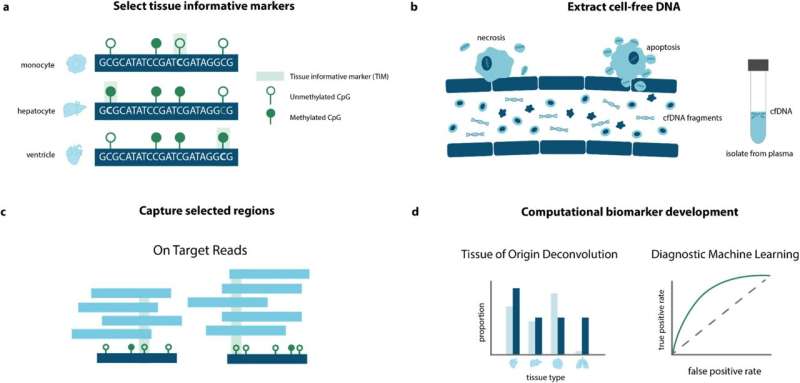The study, published in the journal Genome Medicine, is the first to test cell-free DNA—fragments of DNA released into the blood from dying cells—as a potential ALS biomarker.
Commonly known as Lou Gehrig’s disease, amyotrophic lateral sclerosis (ALS) is a rare and currently incurable neurodegenerative disease that causes the loss of motor neurons in the brain and spinal cord.
ALS onset typically begins in patients who are 50–70 years old with life expectancy being only two to five years after initial diagnosis, according to the National Institutes of Health. While ALS is rare in people ages 40 or younger, earlier diagnosis can provide higher life expectancy, thus prompting neurologists to find a way to better predict onset and disease intensity.

